Wine, sea, sun and Blue Fish
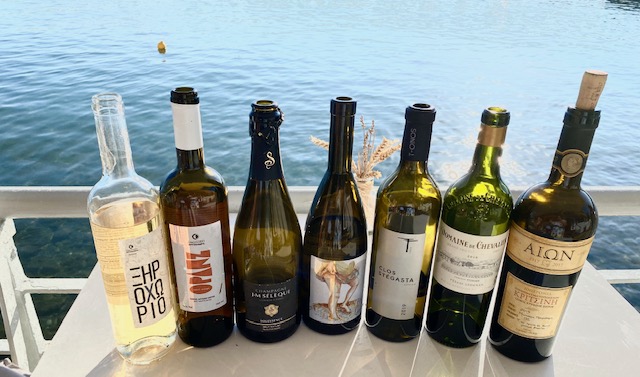
Along the Athenian Riviera, among other adventures
Athens log, updates and restaurant recommendations : photos and text by Panos Kakaviatos
10 September 2020
Dear readers, it has been a while since I last posted in these pages, but I am (finally) putting together the rest of what 2019 Bordeaux barrel sample notes I have, so thanks for waiting just a bit longer. I was also busy getting an article published in Decanter about white Graves wines (for subscribers only) and a text on Assyrtiko to be published in The World of Fine Wine.
My studies to earn a WSET diploma in fine wine continue, thanks to Konstantinos Lazarakis MW here in Athens, where I took a few days off as well. The COVID19 crap has thrown a monkey wrench into many plans, leading to delays in getting this project done. Konstantinos had given me a crash course on Greek wines back in 2013 – over 50 Greek wines red and white – to see how many had much improved (already much more these days). During that tasting, I discovered the brilliant Ovilos for example… And since that tasting, I note that more Greek winemakers are better judging the use of oak especially for red wines and to what extent Assyrtiko has earned its place as a world class dry white wine variety.
Kritikos Taverna
WSET coursework included tasting 12 wines blind and 15-20 non-blind each day for three days. And I realized that I better get the handle on using proper WSET lingo for tasting notes, if I want to pass the exam. I also discovered a superb taverna in the city’s leafy northern suburbs, which must be mentioned before I get to the fish and seafood.
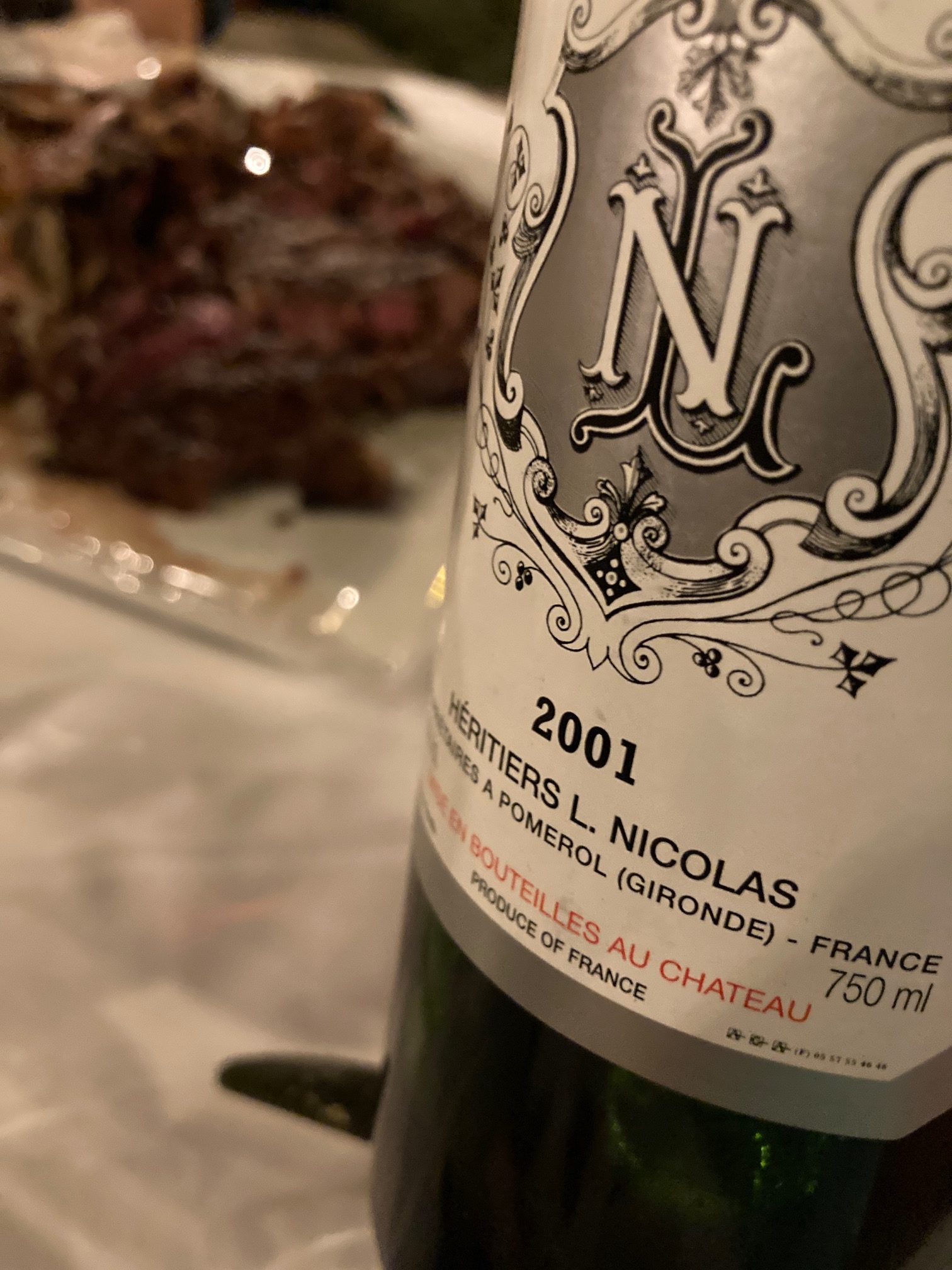
A spot of Pomerol with top Greek meats.
Even my 90-year-old uncle perked up when I told him about the Kritikos taverna. Once things settle more for traveling, and you feel more confident to fly, do not hesitate to dine there. Trip Advisor dubs it the “best meat restaurant in Athens”, given the superb quality of lamb chops and beef, which I enjoyed with fellow WSET diploma students under COVID19 social distancing conditions (only outdoors, proper separation of tables, etc).
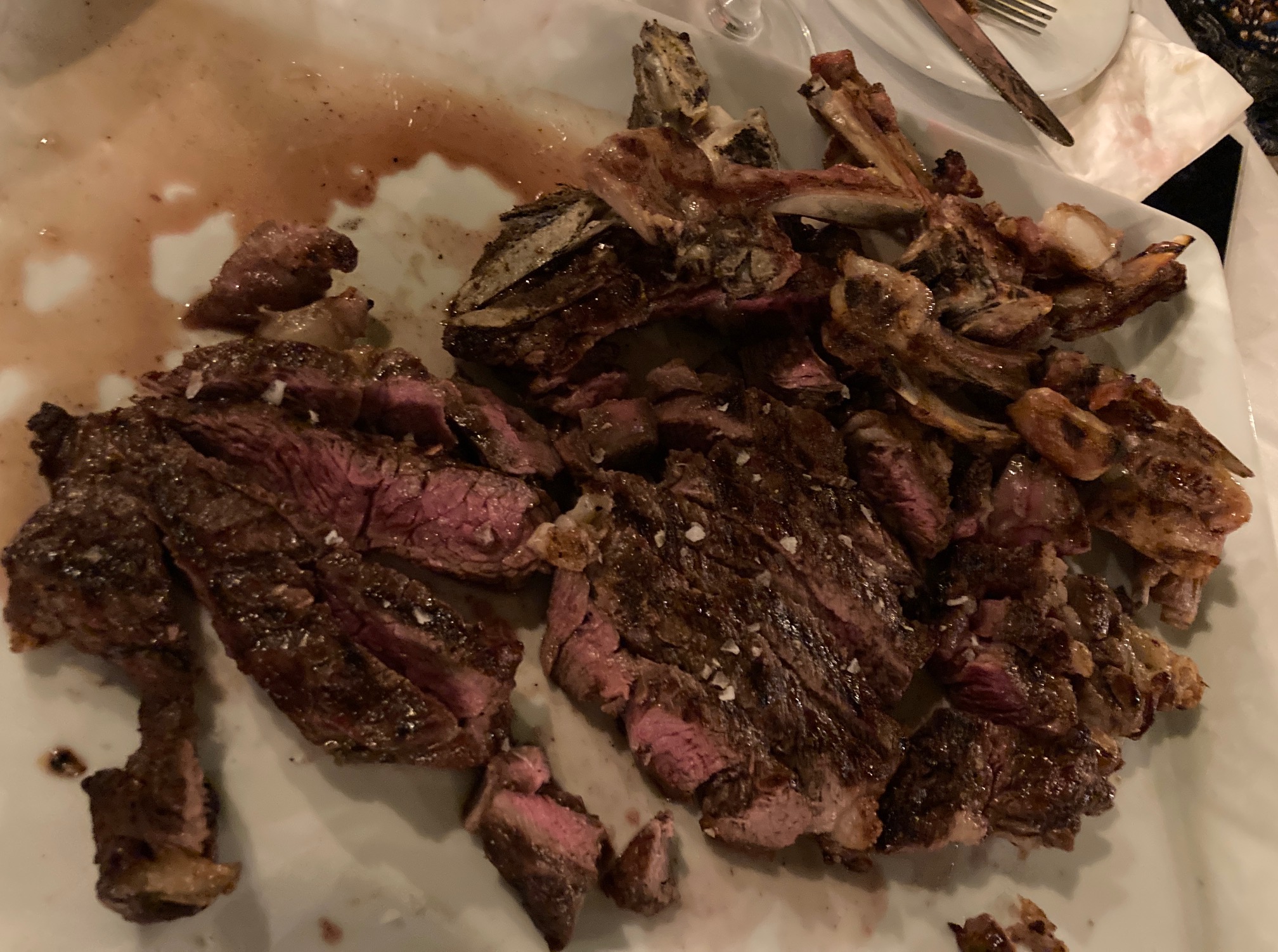
Fresh cut “French fries” also superb…
Thanks to them for the kind invite for which I brought along a 2001 Château La Conseillante: a perfect match!
By the sea
Of course Greece evokes the sea. And after having discovered fine beaches and seafood and fish tavernas in Porto Rafti, conveniently close to the airport, let me focus however on a truly amazing dining experience to the south in Vouliagmeni, considered to be the “Athenian Riviera”. About 30 minutes drive from the southern part of Athens (about 40 from central Athens), the restaurant Blue Fish has earned the well-deserved “Travelers’ Choice” category in Trip Advisor.
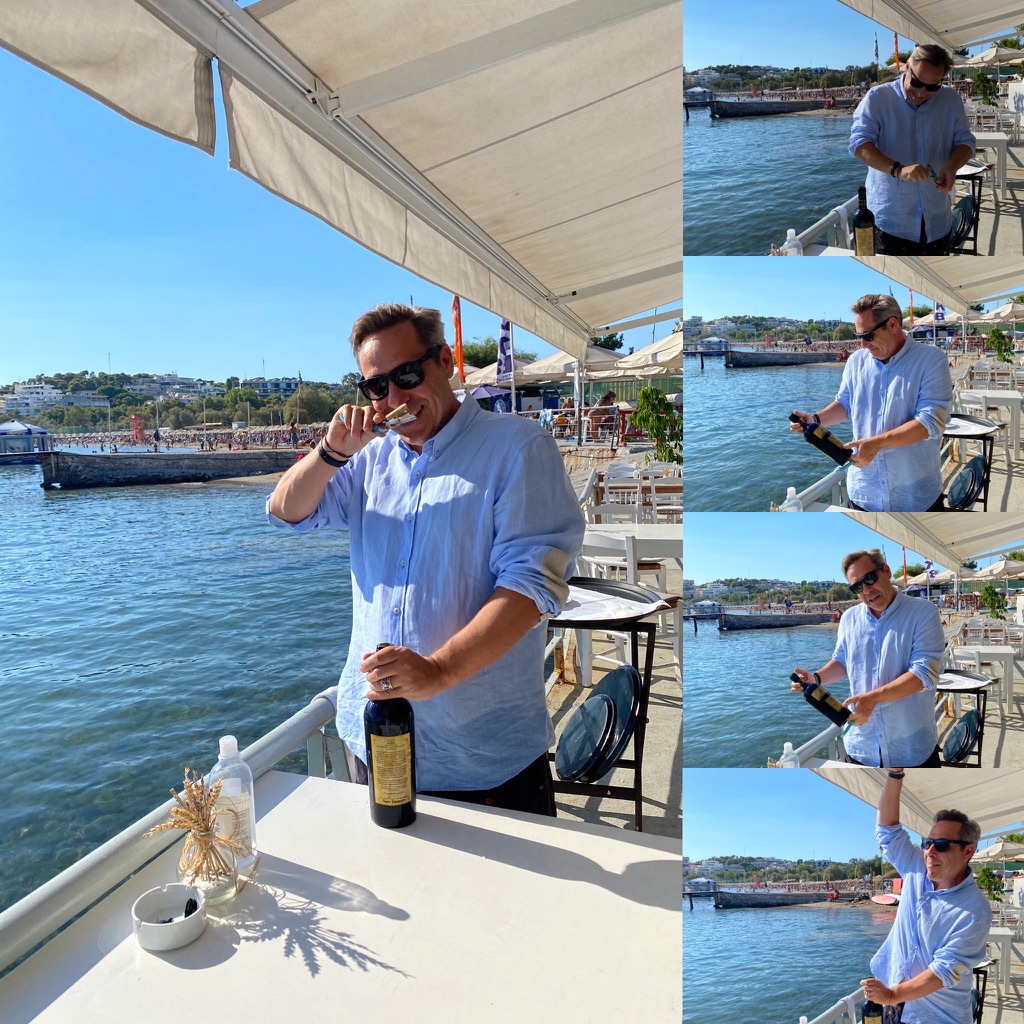
Yiannis Karakasis MW, always at work
Chalk this discovery up to the talented and hard working Yiannis Karakasis MW, who invited me to join family and friends for Sunday lunch at Blue Fish, which had opened four years ago. One of the most active MWs I know, let me digress one more time to address his latest initiative for September 2020: a new competition to put 50 top Greek wines on the map.
50 Great Greek Wines (50GGW)
As explained on the official competition website, the 50 Great Greek Wines (50GGW) is a “new wine project” committed to promoting and communicating Greek wine to the world. It is taking place as this text is published, from September 9 to September 12 in Athens, Greece. Competing wines will be tasted blind, and the “best wines” will be awarded on September 29. Yiannis founded 50 Great Greek Wines because “communication and growth” go hand-in-hand. He and the organizers want to “communicate 50 unique stories that will converge towards the primary, single winner: Greek wine.”

Priority goes to quality criteria and not to quantity. Only 50 highest scoring wines are awarded. Moreover, bottles of competing wines have not been sent not as samples from wineries, but were purchased on the market as current releases, thus increasing consumer relevance. Leading tasters from the world wine scene comprise the judging panel this year: Mark Andrew MW, Stefan Neumann MS, Lenka Sedlackova MW, Terry Kandylis, Wojciech Bońkowski, Gregory Michailos, Stathis Saltas, Vagelis Psofidis and Lefteris Hanialidis.
The Blue Fish restaurant
But now let’s focus on the superb Blue Fish restaurant dining experience. September 6 proved to be an easy-going Sunday late lunch that began with a swim in the Mediterranean in the restaurant’s exclusive beach area. We had a table on the outdoor balcony abutting the sea and the private beach is a plus: the nearby public beach was packed.
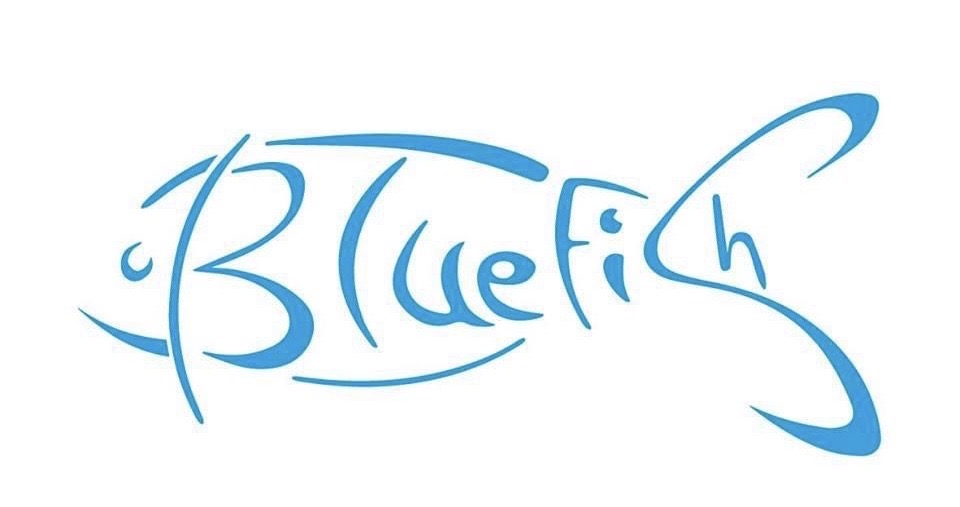
So close to the water were we that a windier day would have easily gotten our feet wet. But the air was calm on Sunday. Between bites we went down a small ladder into the sea making this experience special. In addition to a superb choice of seafood and fish, the restaurant has a great wine list thanks to Yiannis, who consults other fine restaurants.
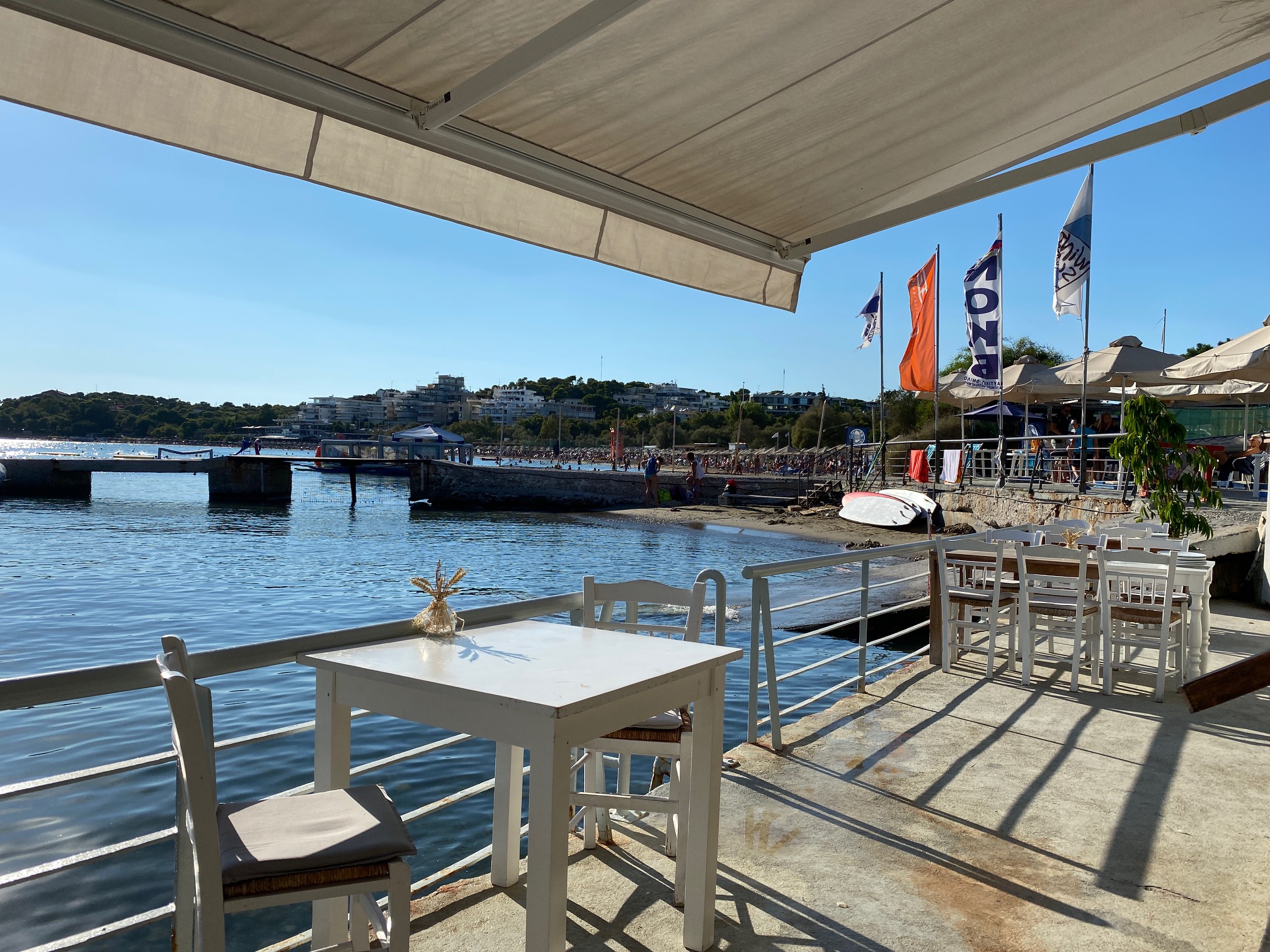
Note the packed public beach beyond the restaurant 😉
The wine list includes many excellent Greek wine selections and top international brands. As I am working on an article about Assyrtiko, I noticed how Yiannis defines the varietal as being of “sun and rocks” before geographically setting it apart on the list: Santorini, The Islands and The Mainland. He recently published a superb ebook on Santorini that devotes much time to that varietal, and I highly recommend it for learning more about that great island’s wine culture and wine route.
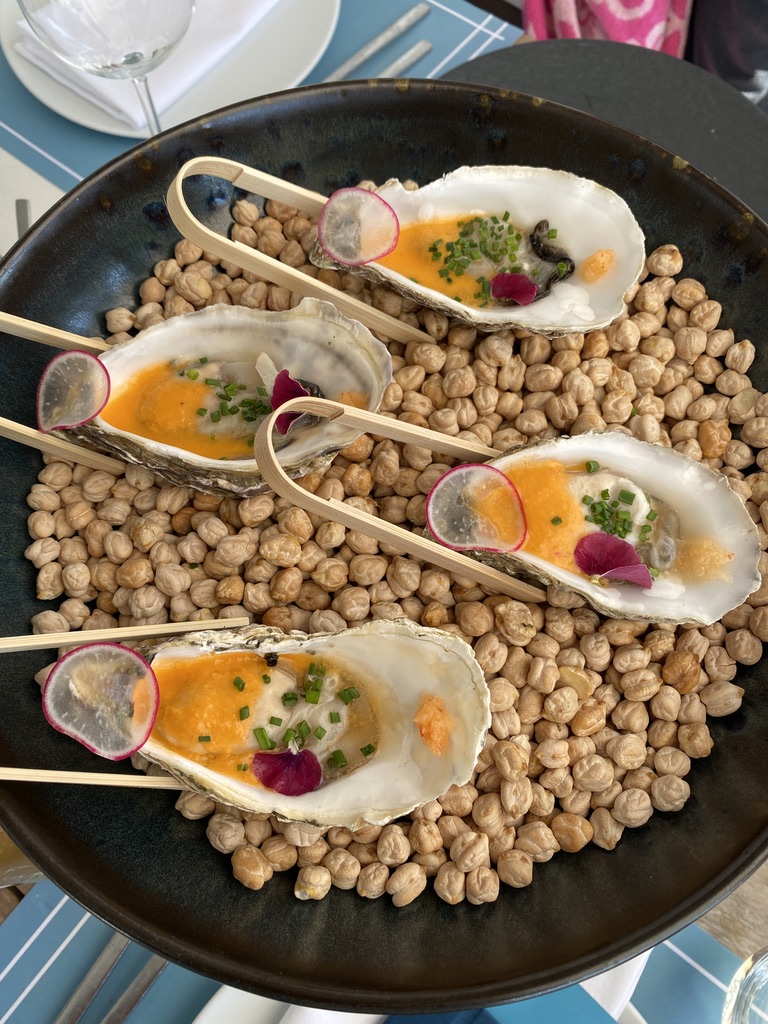
Bring on the oysters
Yiannis brought five wines and I two. Restaurant director and head chef George Economidis crafted special dishes for us to pair the wines. And what a friendly, efficient and educated staff! It includes a sommelier who earned her WSET diploma.
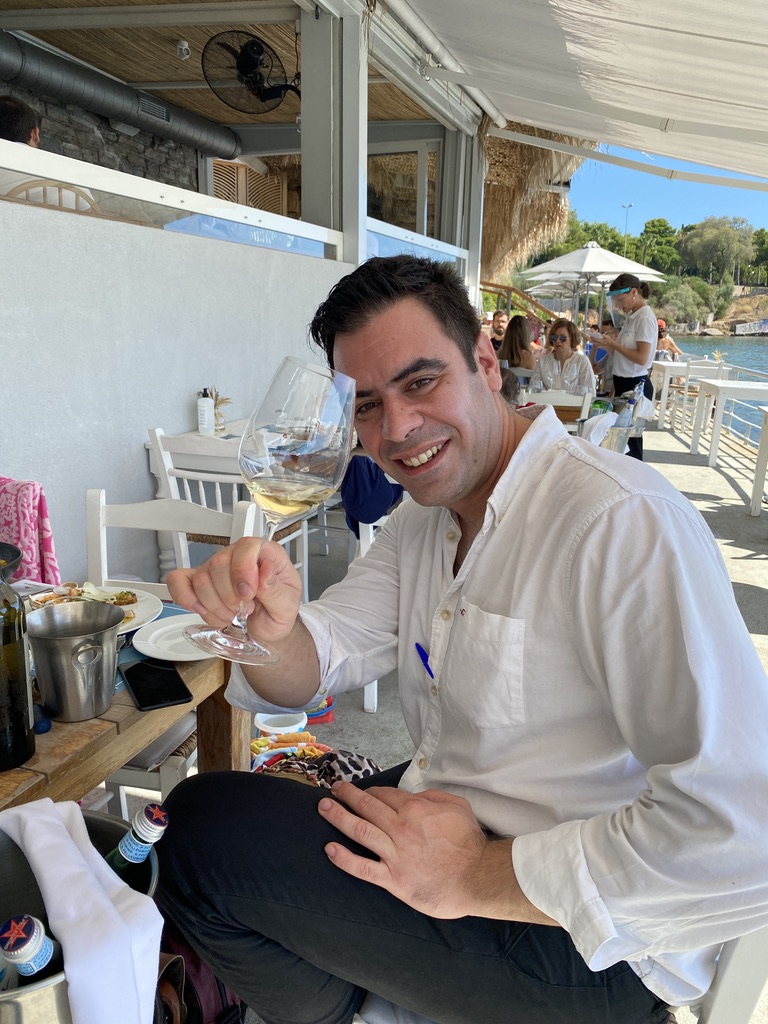
Restaurant director and head chef George Economidis
An inspired chef, George had worked for several years on what has become the rather posh island of Paros (I last visited way back in … 1987). As for the wines, we started with two from the island of Serifos, both interesting and tasty.
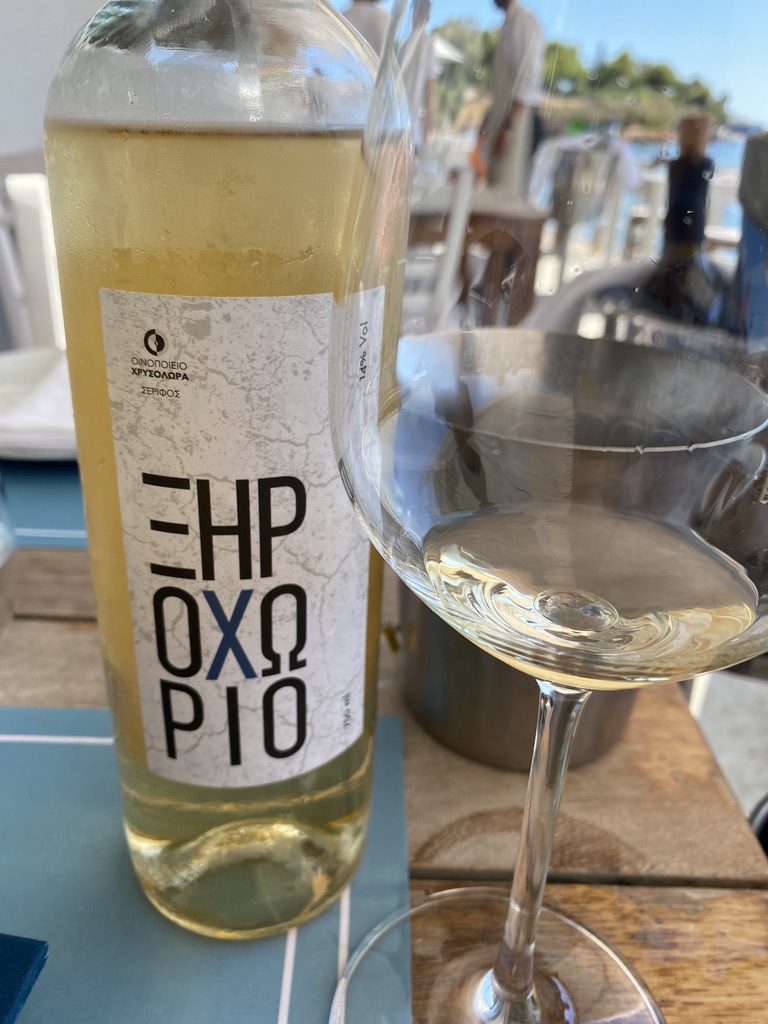
Dry white from Serifos Island
Paired with oysters topped in a savory Daikon oroshi (grated daikon radish) and chilly sauce, the first wine made from an indigenous grape from the island called Serifiotiko had a Marzipan like medium bodied palate, marked by medium length and a salty finish that echoed the oyster flavors. At 14% alcohol, the grape must have high natural acidity as it was not heavy at all: indeed, it made me think of a warmer climate version of Gruner Veltliner, with that salty aspect and rather streamlined palate. Yiannis also brought an Orange wine version by the same producer, exuding spicy curry and chick pea aromas, that struck me more than the “conventional” wine.
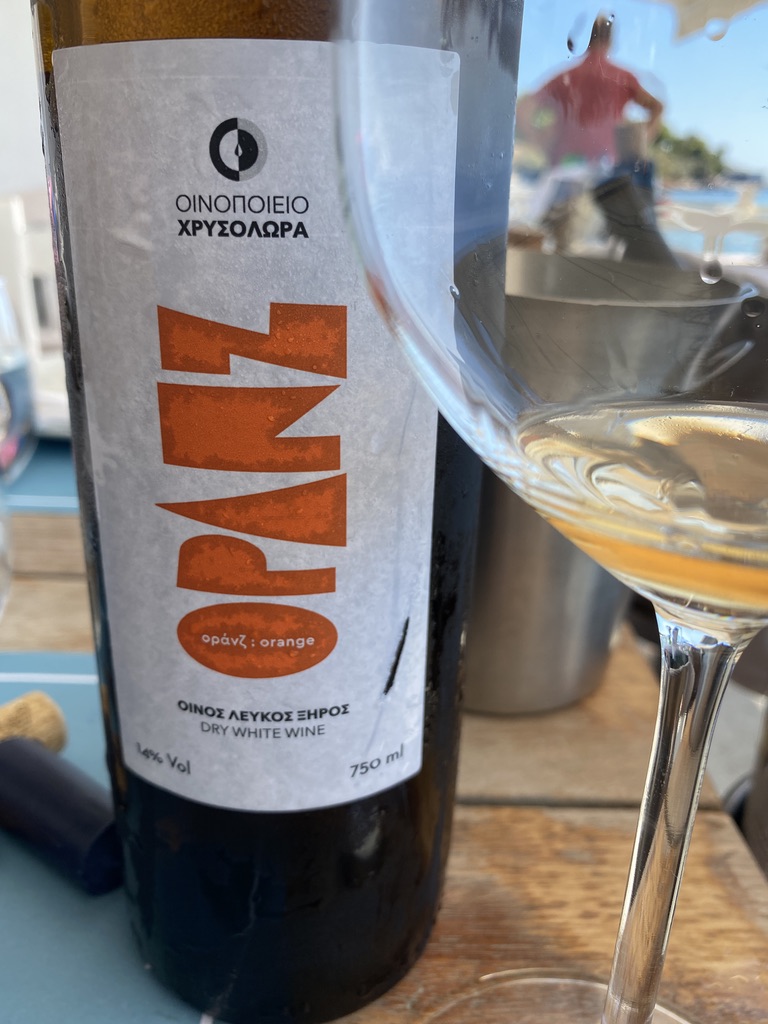
Greek Orange
It even looked orange, given six months skin contact, but I felt that the finish dried out and came up short, making me wonder whether shorter skin contact would have been better. I preferred the first wine of the two.
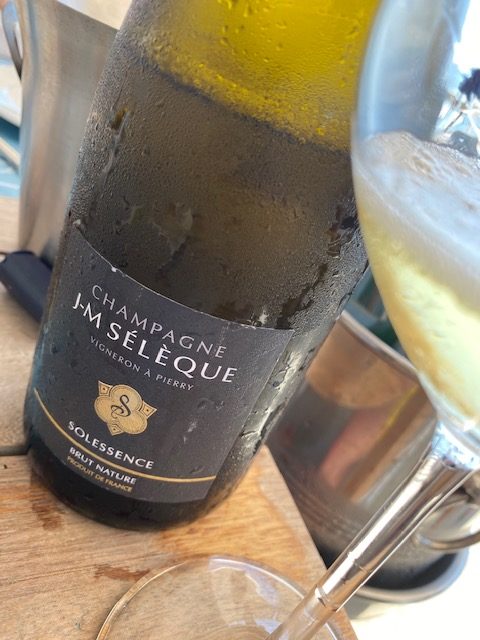
Just before cracking open the Champagne – the J-M Sélèque Solessence Brut Nature mainly from 2012 vintage grapes blending Chardonnay (50%), Pinot Meunier (40%) and Pinot Noir (10%) – we took another plunge in the sea. Or maybe it was before. I do not recall, but we plunged in at least twice between dining to get refreshed, although we did a more serious swim before starting the meal.
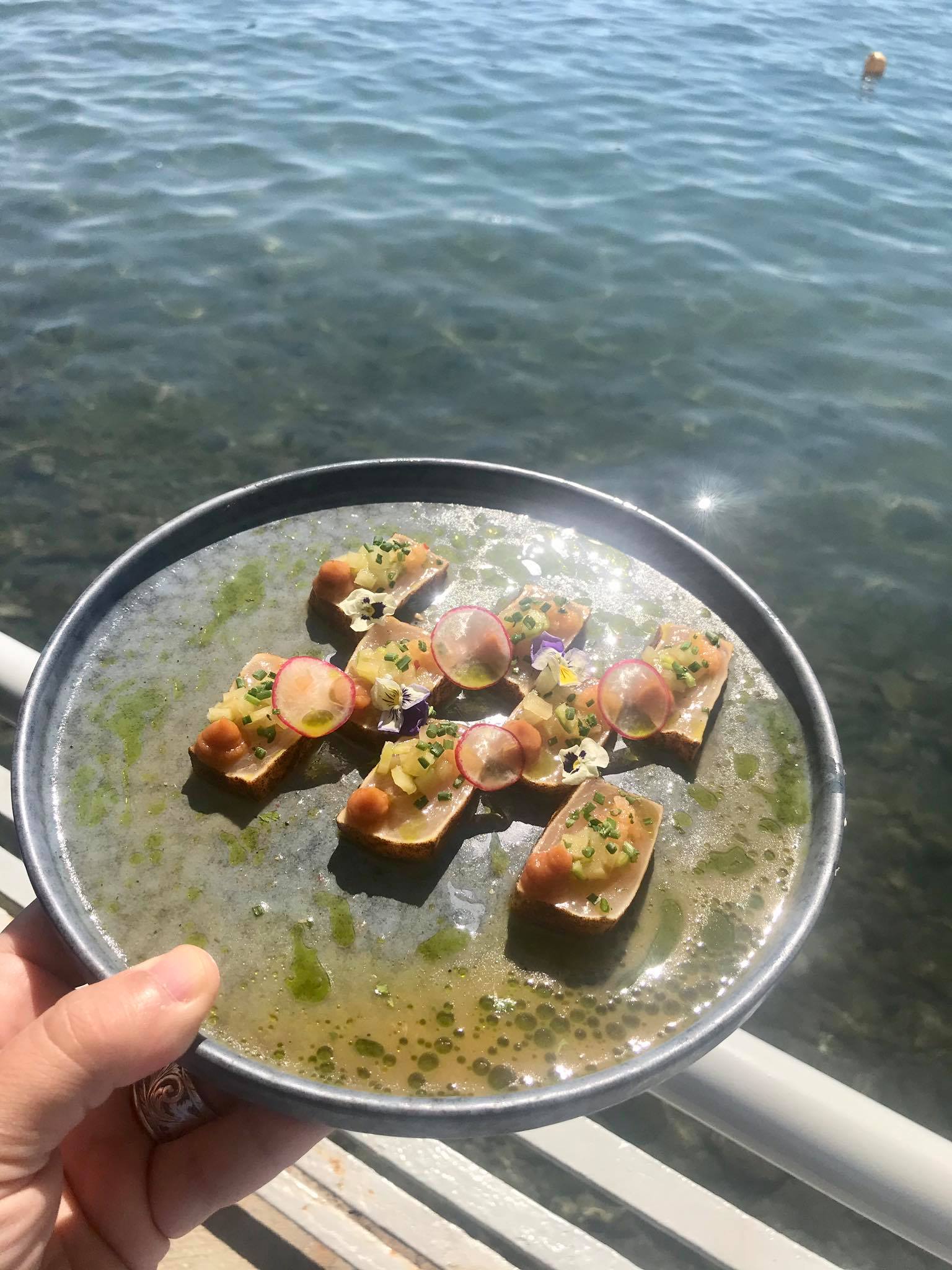
Fresh caught tuna tartar (photo by Yiannis Karakasis MW)
The day was warm and sunny so the sea plunging option was taken even if the awning over our table kept us in the shade as temperatures reached about 90 degrees Fahrenheit. All good for Champagne! With zero residual sugar, it conveyed the richness of the 2012 vintage. It had a fine bead and verve as well. We loved it with the Tuna Tartar and Seafood Ceviche.
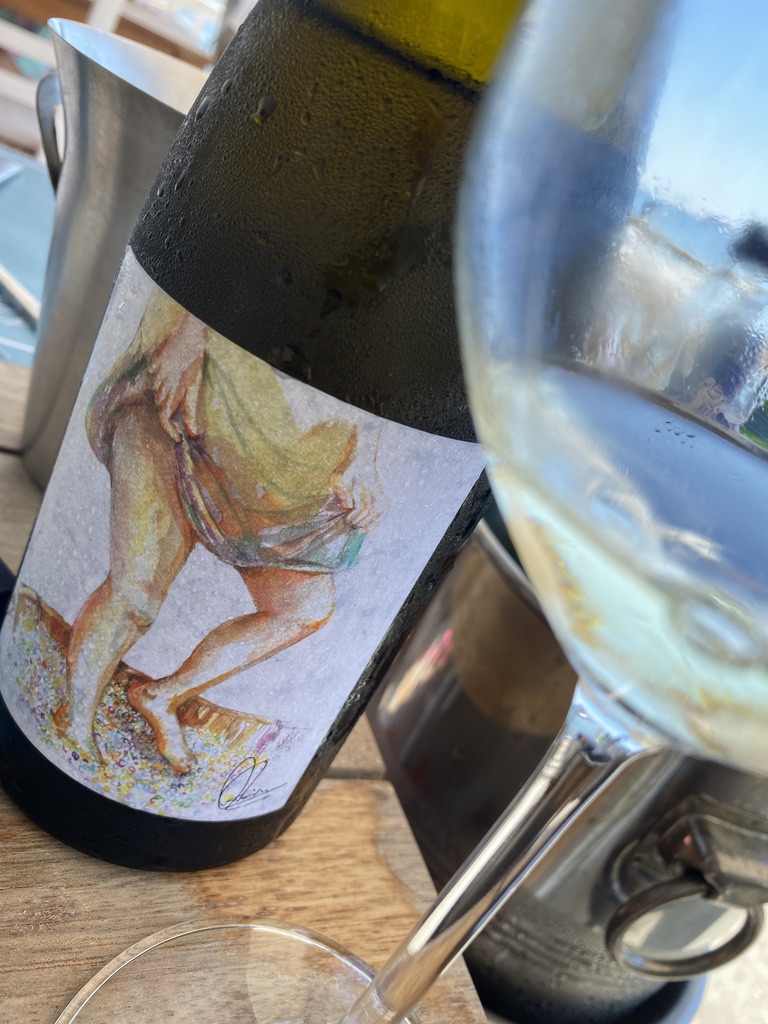
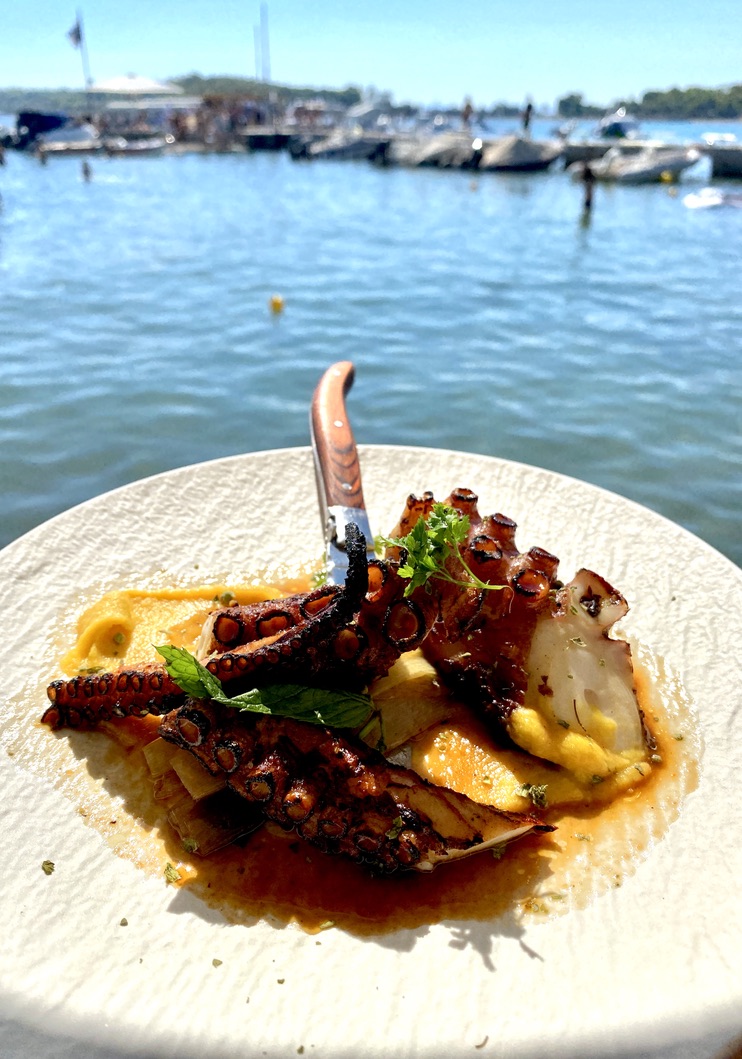
Tender and thick grilled octopus by the sea: Heaven on Earth
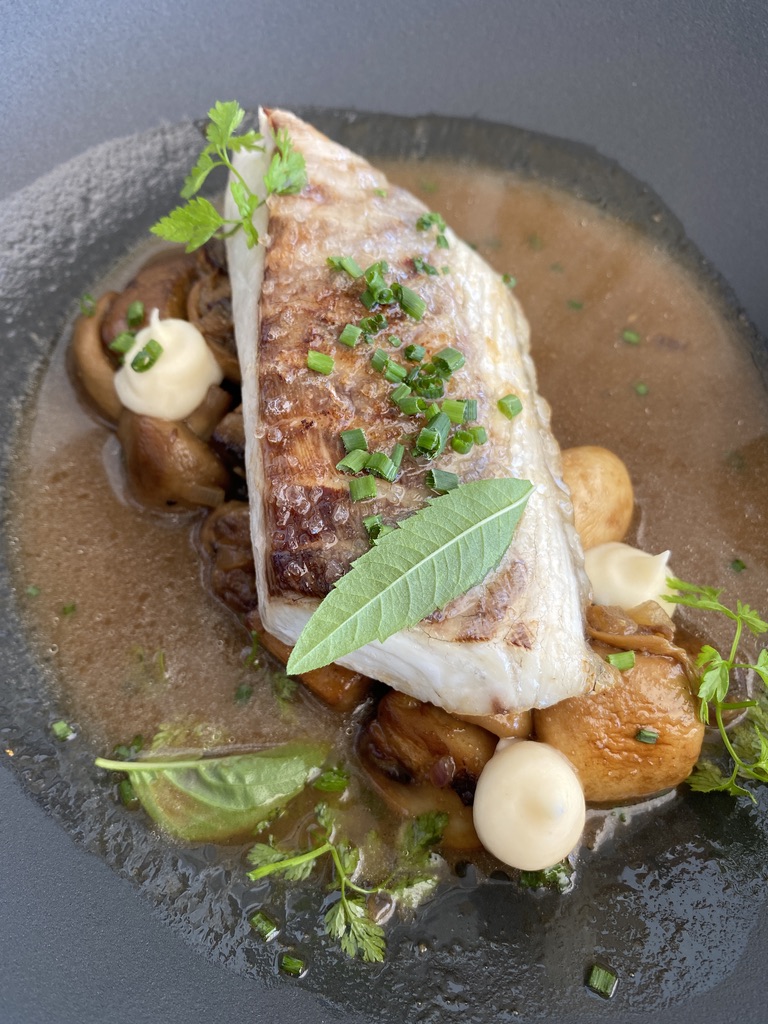
Sea bass with … shrooms!

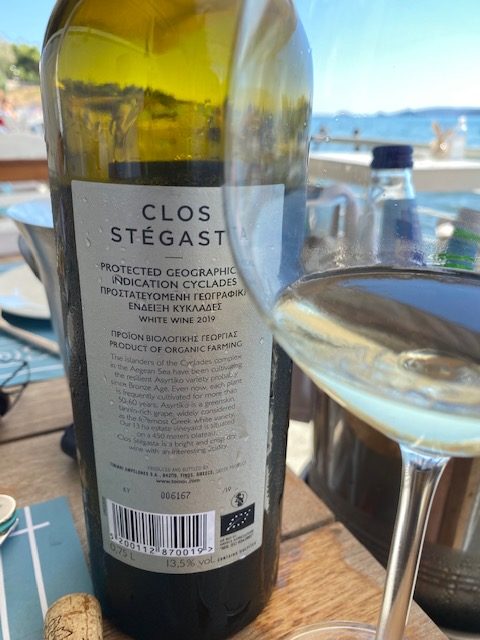
I brought a couple of bottles. As you can see in the photo, they included one of my favorite dry Bordeaux whites: Domaine de Chevalier Pessac-Léognan Blanc 2016. It sang as nicely as expected, pairing well with the sea bass and lobster from a seafood medley in curry sauce that had been (also) served earlier with the Champagne.
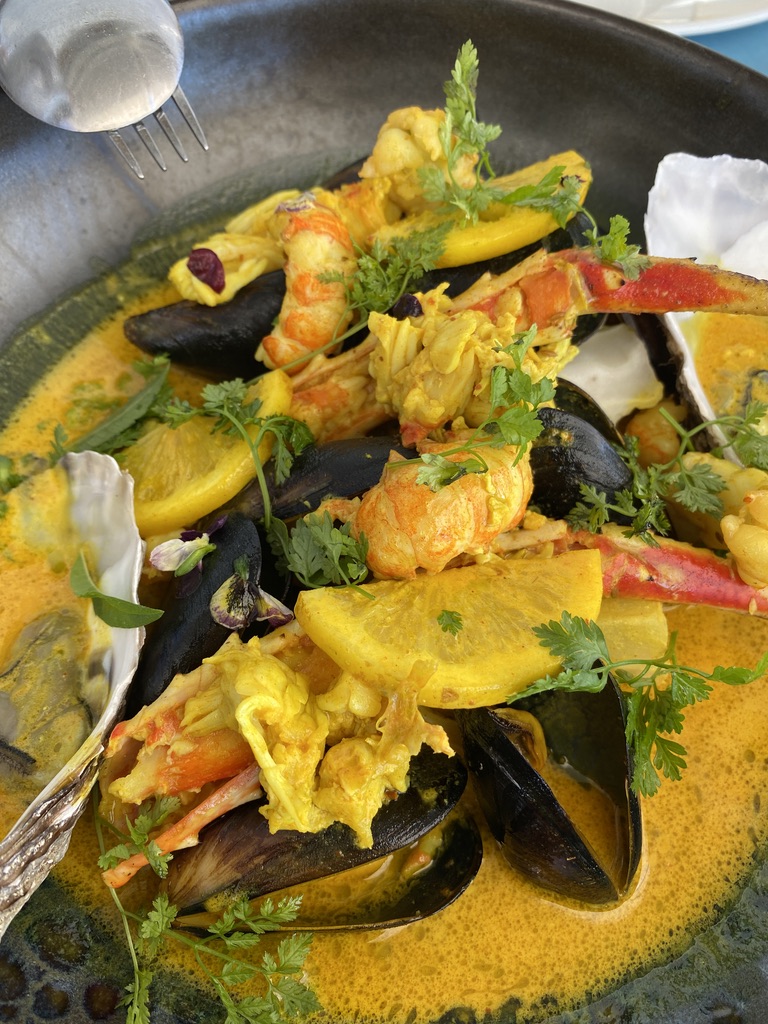
Seafood cornucopia, with curry
2016 was on the warmer vintage register for Bordeaux whites, but this estate’s cooler terroir proved a match. Sealed in a Diam 30 cork, the wine retains freshness better than ever. Indeed owner Olivier Bernard has been using the Diam30 since the 2015 vintage, which I had tasted for my article in Decanter. It time to open up – how often must we emphasize how great dry whites need air – whereupon it displayed fine pear aromas along with ripe apricot and Key Lime Pie. The comparison with the Assyrtiko proved to be on equal terms: two excellent dry whites.
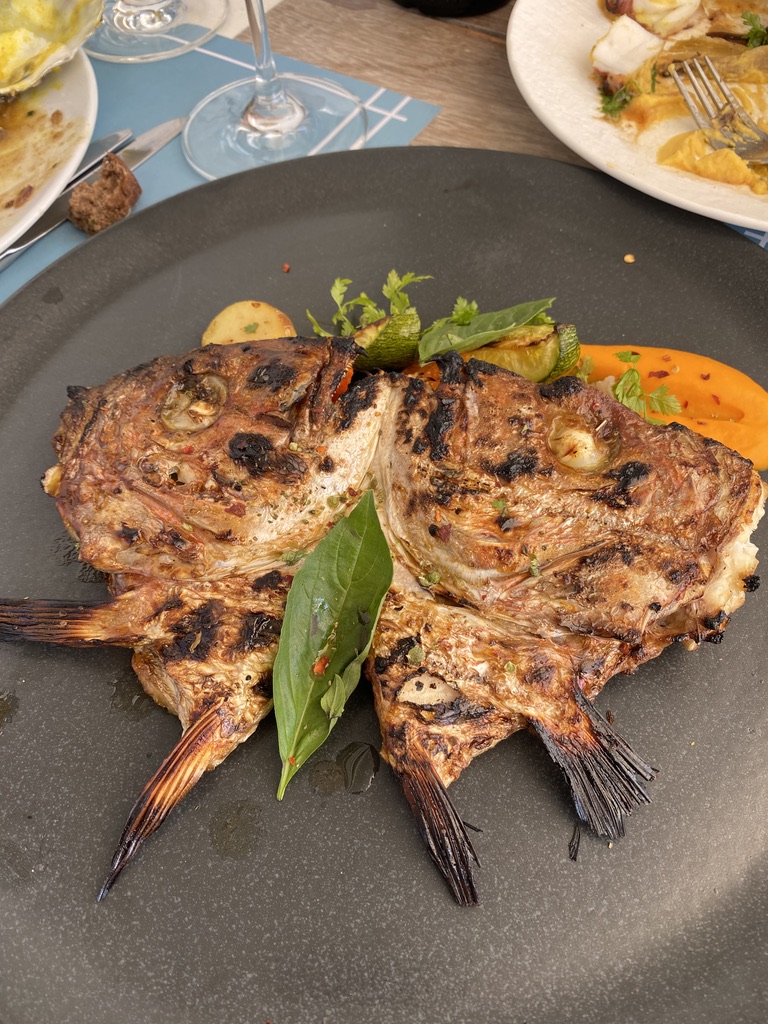
The fish crown: head and cheeks above the rest
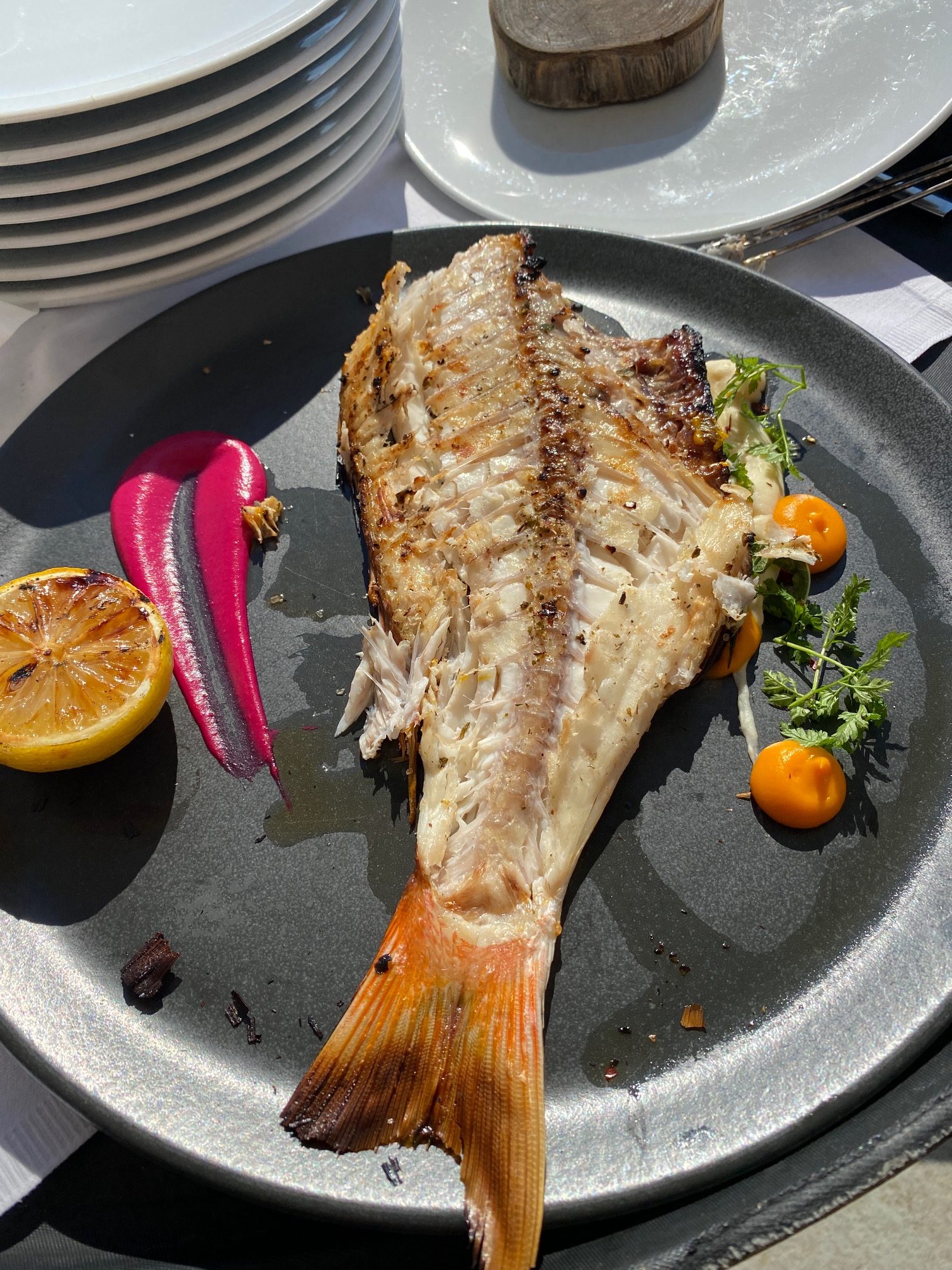
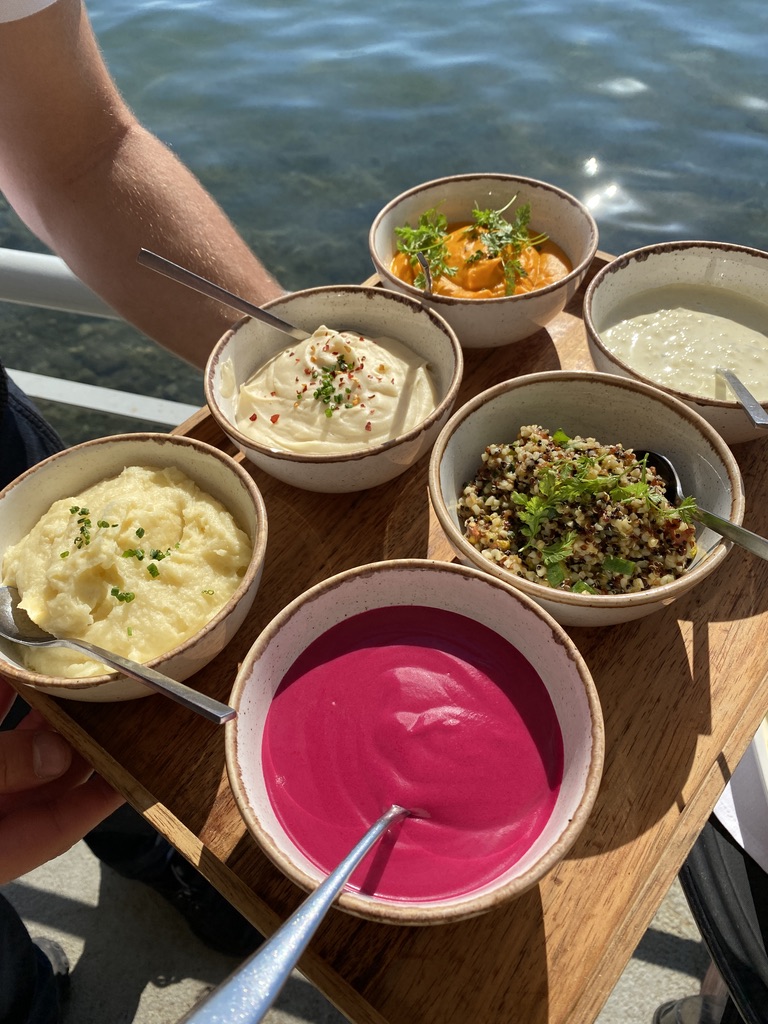
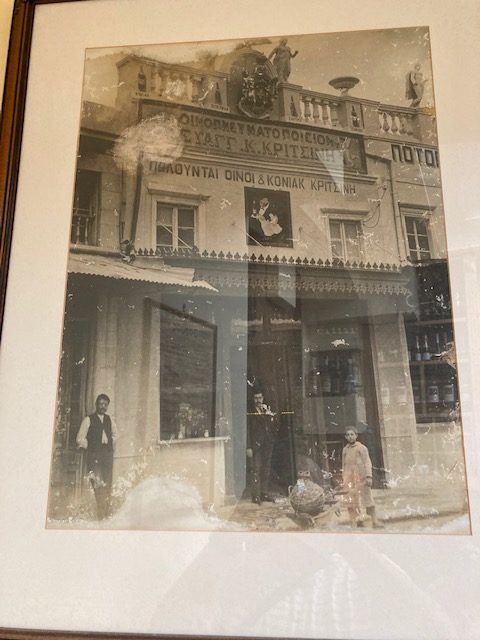
Old and …
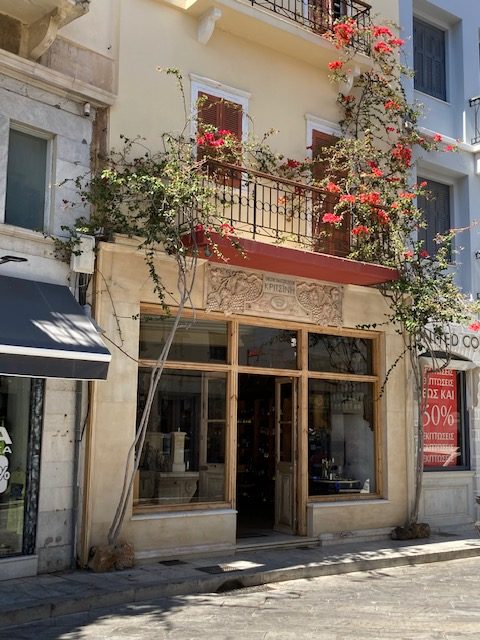
… new
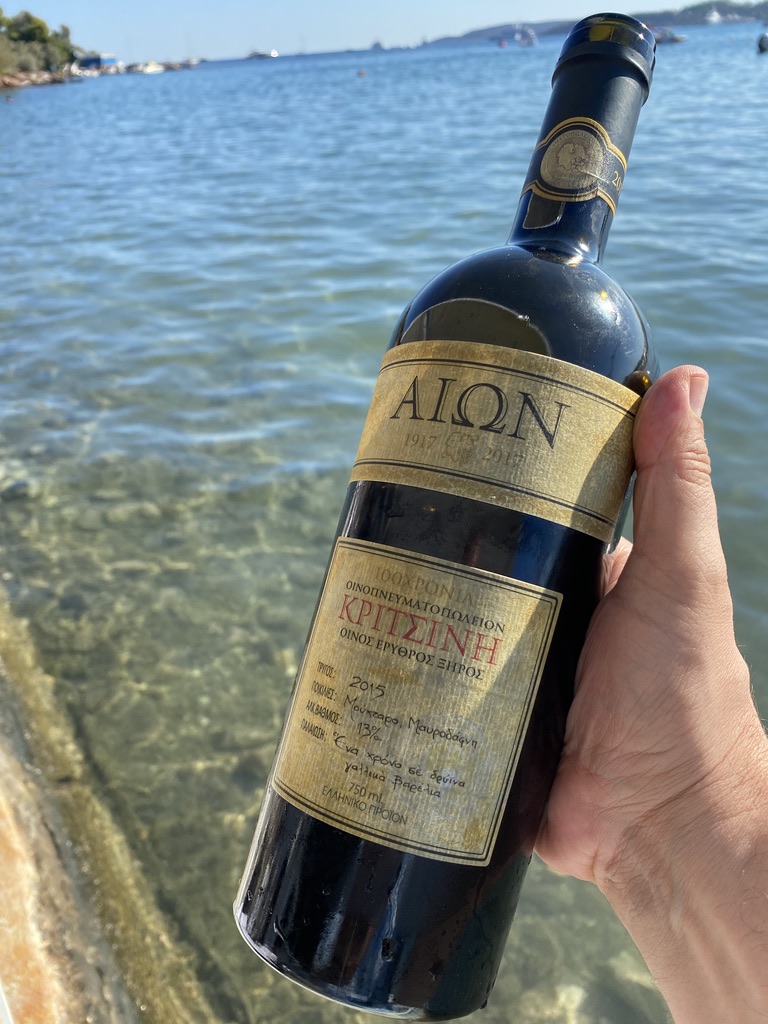
Both Yiannis and I were apprehensive that it could end up being an over oaky monster, but it was as far as you could get from that. This blend of the black indigenous grapes Moustaro and Mavrodaphne yielded dry red wine of smooth texture, and its 13% alcohol proved all in balance.
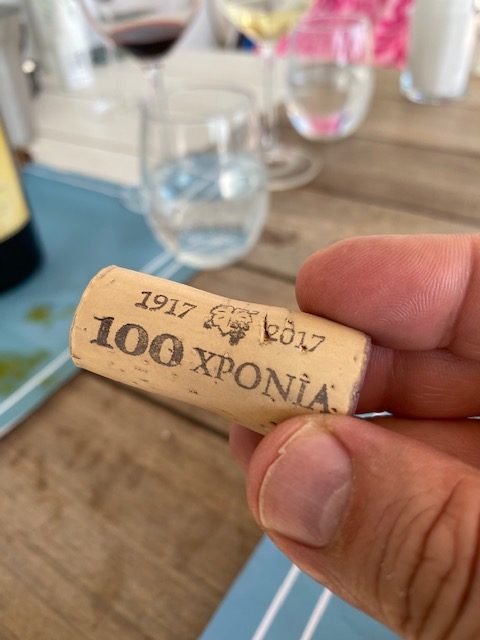
100 years
After an initial rather earthy nose of new saddle leather and tomato vine (Yiannis explains that that is typical of the Moustaro), the palate later exuded fruit forward aspects, with refined tannin, actually rather soft and elegant. The wine well integrates 12 months in oak. And the finish is fresh without drying at all. A fine red, and worthy of the 100 years anniversary for the retail shop of Ermoupolis.
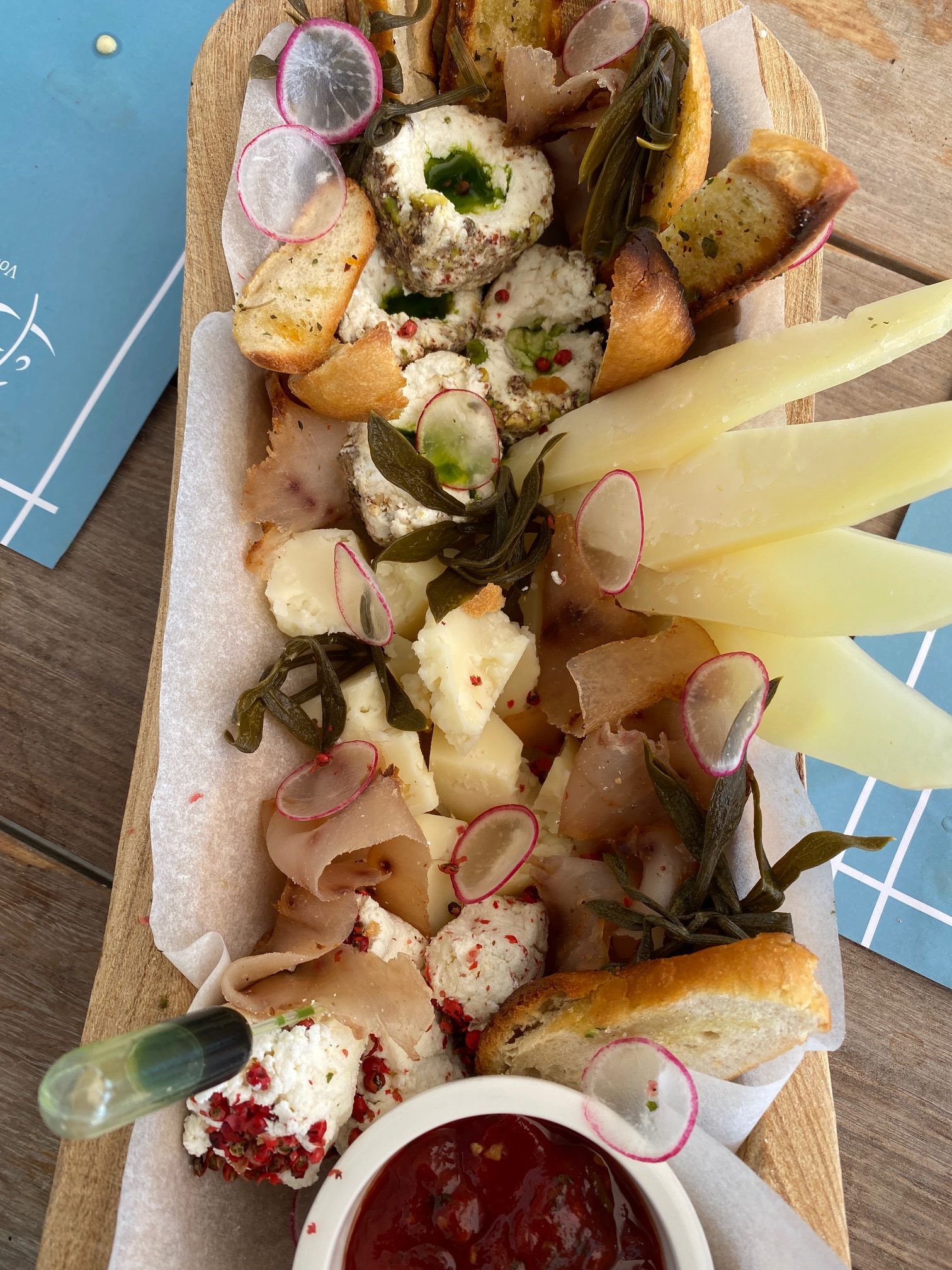
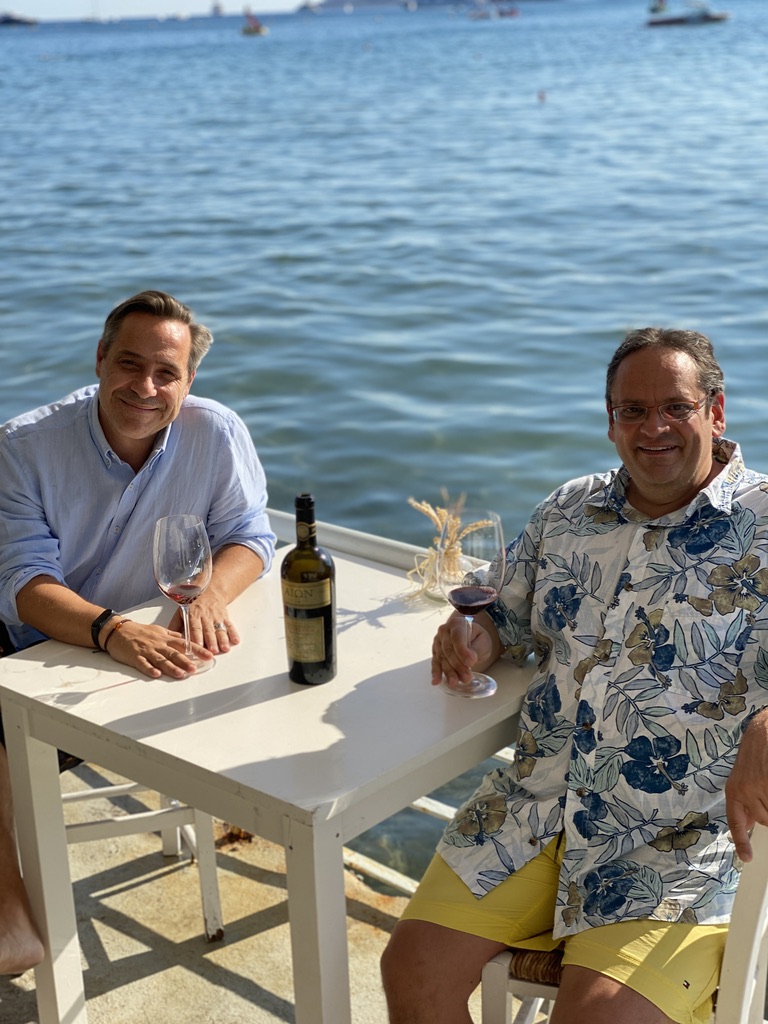
 Wine Chronicles
Wine Chronicles
Amazing food and wine photos. I want to be in Greece so badly!!
It would be great !
Thanks 🙏🏼 my friend I will waiting to see